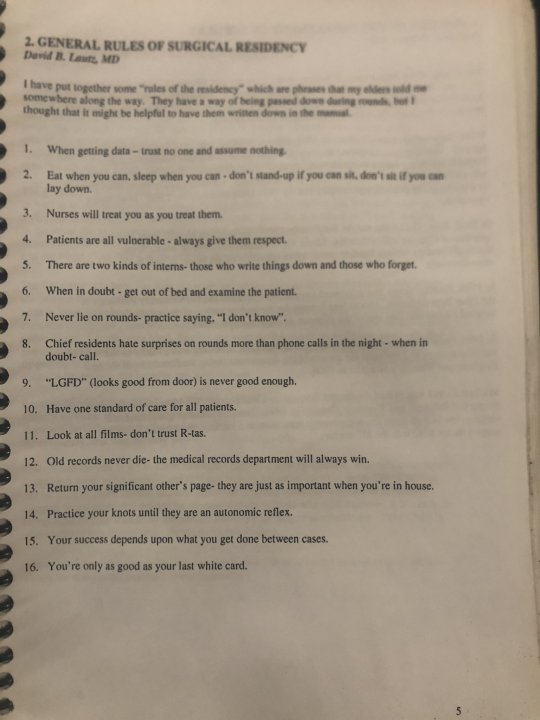Text
Science is always wrong. And science never solves a problem without raising ten more problems to confront us.
- George Bernard Shaw, quoted in "What is the significance of 'collateral dependent perfusion'?" by Jennifer S. Lawton, The Journal of Thoracic and Cardiovascular Surgery, Vol. 151, Number 1, 2016
0 notes
Text
Zeeman's mathematical model for the heartbeat used a stable equilibrium, a threshold for triggering an action potential, and a return to equilibrium in describing cardiac dynamics (Jardón-Kojakhmetov and Broer 2014). The model has three necessary characteristics: (1) an equilibrium state that represents the diastole, or relaxed state of the heart, (2) a threshold for propagating electrochemical waves that lets the heart contract into the contracted systole state, and (3) a rapid return to the original equilibrium state as part of the limit cycle. This is a catastrophe. With the limit cycle continuing, the heart continues beating.
Ather SH. Catastrophe theory in work from heartbeats to eye movements. Biol Cybern. 2021 Feb;115(1):39-41. doi: 10.1007/s00422-020-00857-3. Epub 2021 Jan 16. PMID: 33452922; PMCID: PMC7925480.
0 notes
Quote
Apoptosis or programmed cell death is a highly regulated and energy-requiring process. In cells subjected to pathologic stresses such as ischemia, there is a delicate balance between survival and death.
Estimated duration of apoptotic process is from 12 to 24h, but cellular morphologic changes are visible in 2h; detection of such changes and of previously produced specific biochemical markers are potential methods for early assessment of apoptosis.
In contrast to apoptosis, necrosis is a violent, irreversible and non-regulated process of cell killing in consequence of profound disengagement of cell homeostasis due, for example, to prolonged anoxia or strictly impaired environmental conditions, leading to complete and prolonged ATP depletion.
Anselmi A, Abbate A, Girola F, et al. Myocardial ischemia, stunning, inflammation, and apoptosis during cardiac surgery: a review of evidence. Eur J Cardiothorac Surg. 2004;25(3):304-311.
4 notes
·
View notes
Quote
In his discussion of causal inference, Hume concluded, after much deliberation, that “appeal to past experience decides nothing in the present case” (Treatise of Human Nature 1, III, 6). In contrast, we almost always rely on past experience when planning our future. We often base our decision-making in one clinical case on our own experience with a previous one, and we typically are unable to avoid relying on past experiences of our own and of others.
Dammann O, Dörk T, Hillemanns P, Reydon T. Causation and causal inference in obstetrics-gynecology. Am J Obstet Gynecol. 2022 Jan;226(1):12-23. doi: 10.1016/j.ajog.2021.09.047. PMID: 34991897.
0 notes
Quote
Chicago architect Louis Sullivan is well known for his progressive philosophy that form should follow function. In anatomy this is demonstrated often, and there is no better illustration of this principle in the human body than the esophagus.
Sabiston’s Textbook of Surgery, 21st edition. 2021. Page 1018.
0 notes
Link
For beginners, ikigai consists of four conditions: First, you love what you do; second, you are good at it; third, the world needs what you do; and fourth, you can get paid to do it.
0 notes
Quote
Trauma is a killer of young people, and it's a global disease. If you look at why trauma patients die, the two leading causes of death depending on whether it's blunt or penetrating, are CNS injury and bleeding.
When I was starting my academic career as a trauma surgeon, you look at the landscape and saw, "Where can I make the greatest impact?" Dr. Trunkey described the trimodal distribution of trauma in the 1970s. There was early death within minutes, then there was a second peak within hours, then there was a third peak over the next few weeks. Over the last 30-40 years, the second peak and flattened out and the third peak has completely gone away. If you make it to the ICU, you will live. You make require dialysis, ECMO, etc., but you will live. Where patients continue to die is in the first hour or so after injury. If you have to look at this big number of patients and find where you can have the biggest impact, that would be hemorrhage control.
Dr. Hasan Alam
Behind the Knife episode “#125: Dr. Hasan Alam on QuickClot, the “Golden Hour,” and EPR”
0 notes
Quote
I made a promise as a kid to my mom I would never remove my turban. Today it is in the Hall of Fame. Embrace what makes you different. It is your superpower. This is the crown I wear each day. Thank you, mom.
Nav Bhatia
1 note
·
View note
Photo

Dr. Joe Bradshaw, General Chemistry I, Ouachita Baptist University
1 note
·
View note
Quote
It does involve stepping out, and it does involve some uncertainty about whether you're gonna be okay and whether you're gonna be able to deliver.
'I'm not sure I should take that on, because what if I fail? What if don't bring it? Then, they're gonna think, 'There's this guy… and he doesn’t have it.’
If you come in focused not on me, but on what we’re all about, which is taking care of people and taking care of patients, then you’re grounded in the right place. Then it’s okay to say, ‘I’m sorry. In that situation, I didn’t meet your expectations. I’m really focused on making this great for this patient. How can I do better next time? How can I be better at taking care of these patients?'
Andrew Bernard, MD - UK HealthCare
0 notes
Quote
I was happy in the midst of dangers and inconveniences.
Daniel Boone
Brainy Quote
0 notes

